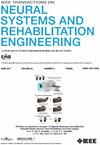基于凸优化的优化时间干扰激励:计算研究。
IF 4.8
2区 医学
Q2 ENGINEERING, BIOMEDICAL
IEEE Transactions on Neural Systems and Rehabilitation Engineering
Pub Date : 2025-04-07
DOI:10.1109/TNSRE.2025.3558306
引用次数: 0
摘要
时间干扰(TI)刺激是一种非侵入性的方法,通过在头皮上施加两对频率差异很小的高频电流来瞄准脑深部区域。然而,由于优化的非凸性,通过计算建模来优化TI的电极配置是具有挑战性和耗时的。我们提出了一种基于凸优化的方法(cvvxti)来优化TI电极配置。我们将TI优化分解为两个凸步骤,从而能够快速确定电极对配置。CVXTI通过结合不同的目标函数来适应各种优化目标,从而增强刺激场的聚焦性。与其他方法相比,CVXTI的性能分析显示出优越的结果,特别是在脑深部区域。通过对四个个体的主体变异性分析,突出了个性化刺激优化的必要性。CVXTI利用TI包络电场的分布特性来优化电极配置,提高优化效率。本文章由计算机程序翻译,如有差异,请以英文原文为准。
Optimized Temporal Interference Stimulation Based on Convex Optimization: A Computational Study
Temporal interference (TI) stimulation is a non-invasive method targeting deep brain regions by applying two pairs of high-frequency currents with a slight frequency difference to the scalp. However, optimizing electrode configurations for TI via computational modeling is challenging and time-consuming due to the non-convex nature of the optimization. We propose a convex optimization-based method (CVXTI) for optimizing TI electrode configurations. We decompose the TI optimization into two convex steps, enabling rapid determination of electrode pair configurations. CVXTI accommodates various optimization objectives by incorporating different objective functions, thereby enhancing the focality of the stimulation field. Performance analysis of CVXTI shows superior results compared to other methods, particularly in deep brain regions. Subject variability analysis on four individuals highlights the necessity of customized stimulus optimization. CVXTI leverages the distribution characteristics of the TI envelope electric field to optimize electrode configurations, enhancing the optimization efficiency.
求助全文
通过发布文献求助,成功后即可免费获取论文全文。
去求助
来源期刊
CiteScore
8.60
自引率
8.20%
发文量
479
审稿时长
6-12 weeks
期刊介绍:
Rehabilitative and neural aspects of biomedical engineering, including functional electrical stimulation, acoustic dynamics, human performance measurement and analysis, nerve stimulation, electromyography, motor control and stimulation; and hardware and software applications for rehabilitation engineering and assistive devices.

 求助内容:
求助内容: 应助结果提醒方式:
应助结果提醒方式:


